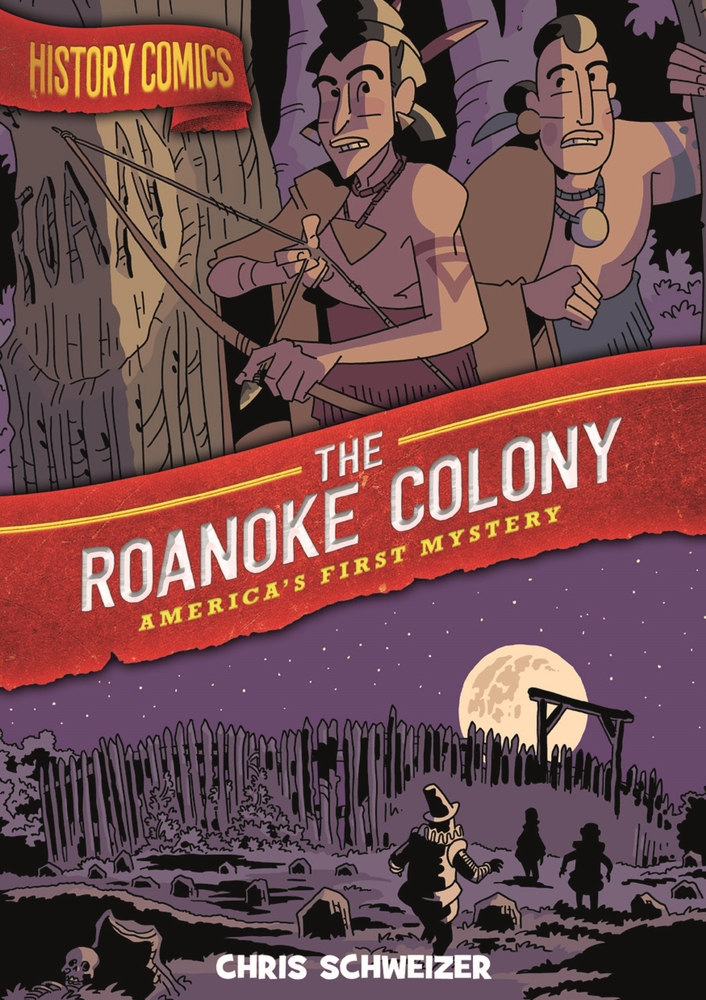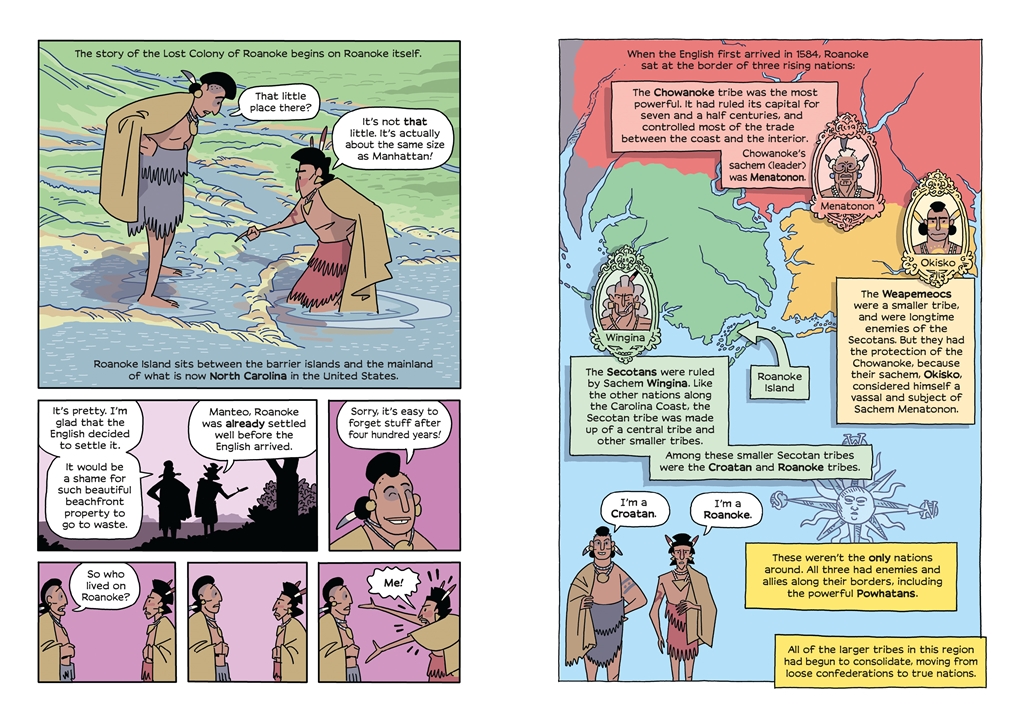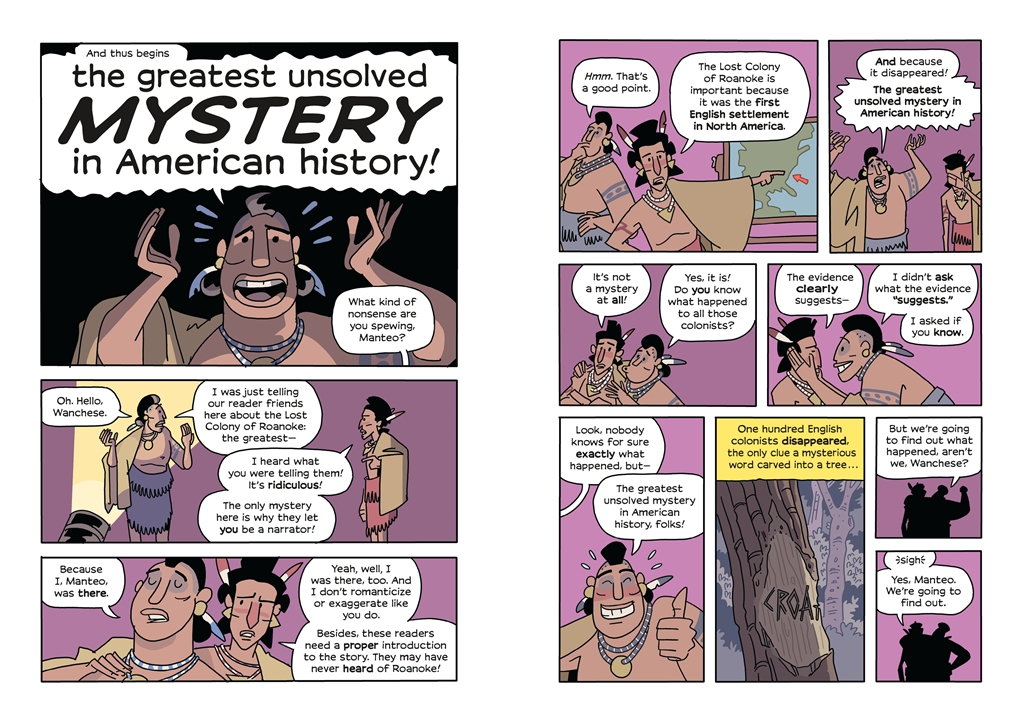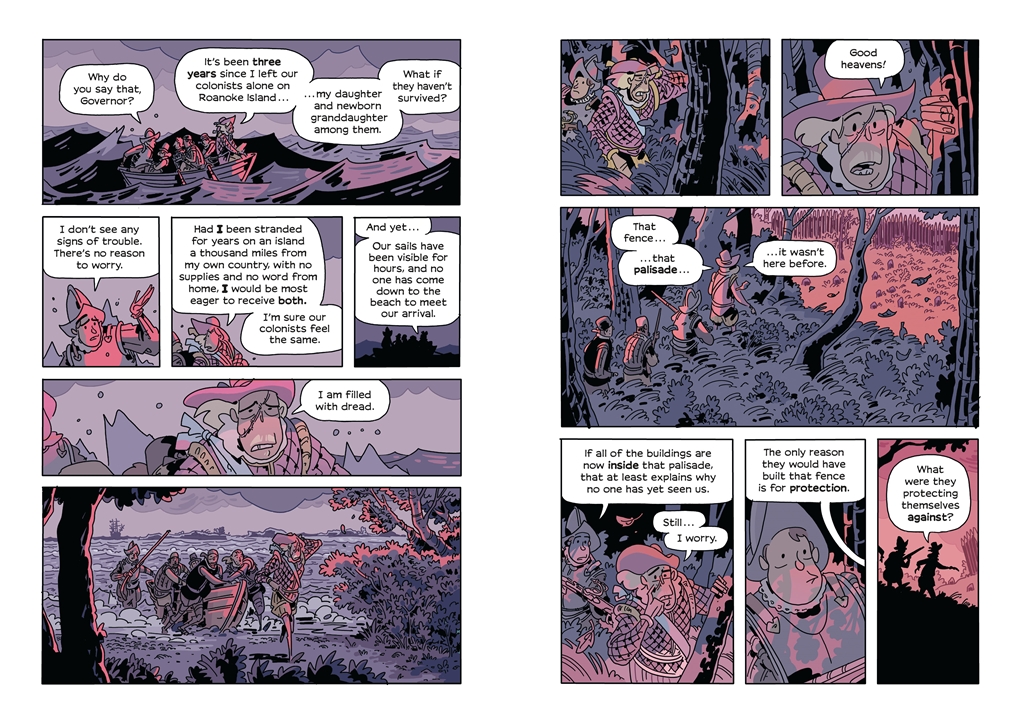:01 First Second produces one of the highest quality book series that you’ll find for middle school readers on science. Science Comics tackles any science concept topic, natural wonder, astrological body, animal or plant species and creates a graphic novel around it that captures the imagination and desire to learn that upper elementary readers and up innately have. Now, :01 First Second has taken that same approach, but shifted the focus to history in a new series appropriately called History Comics. One of the first books in this series is The Roanoke Colony, America’s First Mystery by Chris Schweizer. The Roanoke Colony is a great example of graphic novel storytelling; perfectly blending illustration and text in a way that makes middle grade students laugh, smirk or otherwise enjoy themselves as they’re learning.

Call it stealth learning, just don’t let them see you call it that. But in reality, many times when you read, regardless of your age, you’re learning. That’s always true if it’s non-fiction and sometimes true when you’re reading fiction.

Parents, you hear graphic novel and you think superhero in tights. I understand you and used to think along those same lines. However, there are many graphic novels that are intended for eight and up that are fabulous vehicles for those ages to learn about new concepts while they’re reading. This is where it’s worth nothing that History Comics, much like Science Comics, are good for kids who are reading to learn, as opposed to learning to read. Our eight year old could look at these books and enjoy the art, but wouldn’t be able to comprehend the text or follow along to the story.

I vaguely know the story of The Roanoke Colony. I know it was an English colony that was meant to take root in the Outer Banks of North Carolina. Growing up in North Carolina I also know that it’s a play that many of the community theaters put on, but I never saw it. That is 100% of because Chris Schweizer does an excellent job in getting readers up to speed on why the settlement was important, who it benefitted most, who it took advantage of and what possibly might have become of the people that lived there.
It’s important to remember that this was done about 100 years before the pilgrims landed hundreds of miles north at Plymouth Rock. And while the purpose of colonization was one reason Queen Elizabeth sent them there, it wasn’t the main reason. Religions, wealth, a race with the Spanish and an open call to any pirate with a grudge against them were the main factors of the colony.

Fans of Nathan Tale’s Hazardous Tales will love this series and The Roanoke Colony; especially so for this book. There’s a pair of Native American narrators that describe things as they were happening back then, but they’re also keenly aware of modern history and the optics of how things looked. It is history. It doesn’t glance over the horrible aspects of anything that happened. The book references the bad things that happened in a straight and serious way. However, the book’s purpose is to tell the story about the lost colony and put forth some ideas as to what happened in Roanoke.
History Comics, the Roanoke Colony, America’s First Mystery is a graphic novel that entertains as much as it does entertain. It treats non-fiction material in such a way that ages eight and up will want to read it, even though they haven’t covered it in history class yet. This is a book that educators will love to recommend, parents will read when the kids are asleep and students will willingly jump in to.
There are affiliate links in this post.





 Facebook
Facebook Twitter
Twitter Flickr
Flickr GooglePlus
GooglePlus Youtube
Youtube